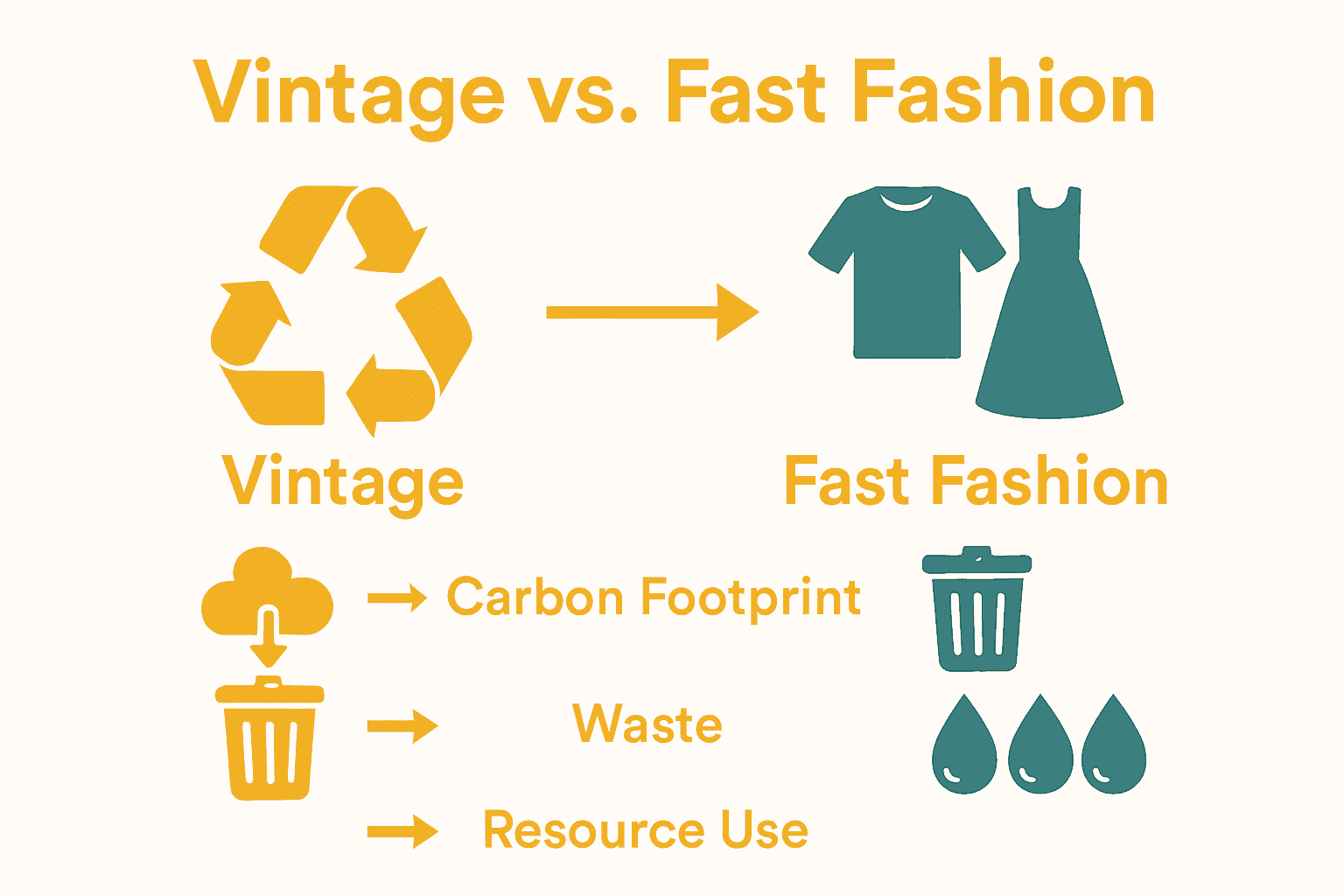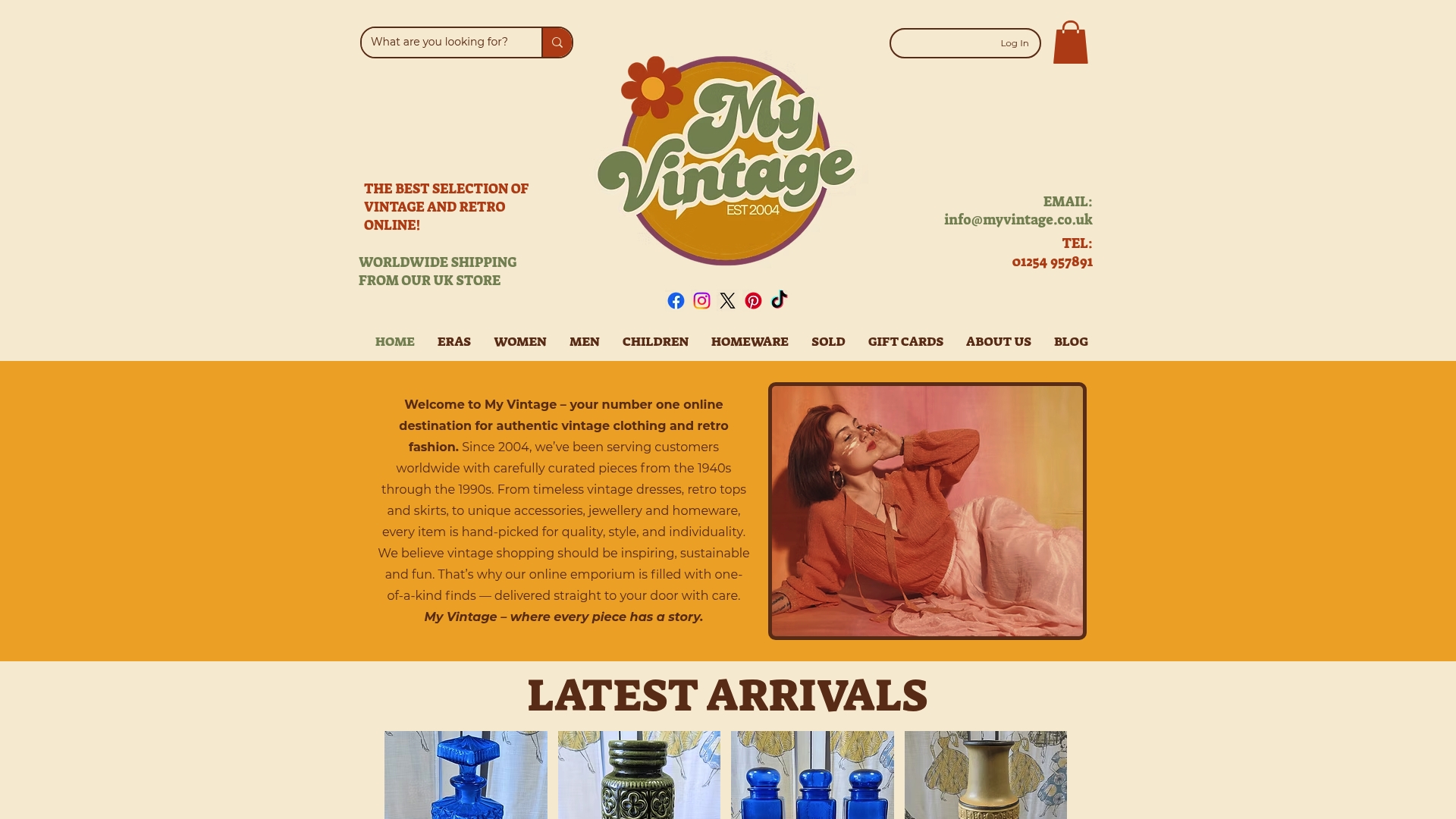The Individuality of Vintage Suits: A Complete Guide
- Emma

- 3 days ago
- 6 min read

More than 60 percent of shoppers say they choose vintage clothing for its unique sense of style and self-expression. In a world flooded with fast fashion, standing out has never felt more important. Vintage fashion carries stories, history, and craftsmanship that modern clothes often lack, giving every outfit a personal touch. Discover how these timeless pieces become powerful statements of individuality and why they continue to captivate creative souls today.
Table of Contents
Key Takeaways
Defining Vintage Clothing and Individuality
Vintage clothing represents far more than simply aged attire - it’s a powerful medium of personal expression and storytelling. According to research from ualresearchonline, vintage fashion “embodies its own heritage, creating emotional and personal bonds across generations”, transforming clothing from mere fabric into a profound narrative of individual identity.
At its core, vintage clothing is distinctive because it transcends mass-produced fashion trends. pure.hud.ac.uk highlights that the rising popularity of vintage fashion stems from consumers seeking “unique styles that express their personal identity and differentiate them from mass-produced fashion”. This pursuit of individuality means each vintage piece tells a story - whether it’s a 1950s swing dress, a 1970s leather jacket, or a carefully preserved accessory.
The essence of vintage style lies in its ability to make personal statements through clothing. Unlike contemporary fashion’s rapid, disposable cycles, vintage pieces carry historical context, craftsmanship, and a sense of authenticity. By choosing vintage, individuals curate a wardrobe that reflects their unique personality, challenging standardised fashion norms and celebrating personal creativity. For those interested in exploring this world further, check out our guide on understanding types of vintage clothing.
Key characteristics that define vintage clothing’s individuality include:
Unique design elements not found in contemporary fashion
High-quality, often handcrafted construction
Historical and cultural significance
Potential for personal interpretation and styling
Sustainable alternative to fast fashion
By embracing vintage, you’re not just wearing clothes - you’re wearing a piece of history that speaks volumes about your distinctive style and personal narrative.

Types of Vintage Styles and Eras
Vintage fashion is a rich tapestry of styles spanning multiple decades, each with its own unique aesthetic and cultural significance. According to researchonline.gcu.ac.uk, vintage fashion traditionally encompasses garments from the 1920s to 1980s, representing distinct periods of design and societal expression.
The boundaries of what constitutes vintage are surprisingly fluid. irep.ntu.ac.uk highlights that the definition evolves over time, with items from the early 1980s being considered vintage by the early 2000s. This dynamic understanding reflects how fashion continually reinterprets and reimagines historical styles.
Vintage styles can be broadly categorised by iconic eras, each with distinctive characteristics:
1920s: Flapper dresses, drop waists, art deco influences
1930s: Bias-cut gowns, structured shoulders, Hollywood glamour
1940s: Utility clothing, military-inspired designs, structured silhouettes
1950s: Full skirts, cinched waists, rockabilly and pin-up styles
1960s: Mod fashion, mini skirts, bold geometric patterns
1970s: Bell-bottoms, platform shoes, bohemian and disco influences
1980s: Power suits, bold colours, oversized silhouettes
For those wanting to explore these fascinating fashion journeys in more depth, take a tour through the decades with our vintage fashion guide, which offers a comprehensive exploration of each era’s unique style narrative.
Understanding these vintage styles isn’t just about clothing - it’s about appreciating the cultural, social, and artistic expressions embedded in each garment.
Every piece tells a story, capturing the spirit of its time and offering a window into the past through fashion.
How Vintage Fashion Expresses Personality
Personality finds its most authentic canvas through vintage fashion, transforming clothing from mere fabric into a deeply personal statement. According to research.edgehill.ac.uk, clothing has been popularised through contemporary culture as a means for media and celebrated icons to dress in attire that reflects their unique identity and sense of self.
Vintage fashion offers an unparalleled avenue for individual expression. carolinanewsandreporter.cic.sc.edu highlights that thrifting and wearing vintage clothing allow individuals to express their unique style, particularly because vintage pieces are often one-of-a-kind and absent from mainstream fashion stores.
The power of vintage fashion as a personality amplifier lies in its ability to communicate multiple layers of personal narrative:
Rebellion: Rejecting mass-produced fashion trends
Creativity: Mixing eras and styles uniquely
Authenticity: Wearing pieces with genuine history
Sustainability: Making environmentally conscious fashion choices
Cultural Connection: Representing personal heritage or admired historical periods
To dive deeper into understanding how fashion reflects personal identity, explore our guide on understanding the role of vintage in style.
Ultimately, vintage fashion transcends clothing. It’s a form of self-expression, a conversation without words, where each carefully chosen piece tells a story about who you are, what you value, and how you perceive yourself in the world.
Sustainability and Ethical Appeal of Vintage
Vintage fashion represents more than just a style choice - it’s a powerful statement of environmental responsibility and ethical consumption. According to researchonline.gcu.ac.uk, vintage fashion consumption is considered a sustainable choice that promotes clothing reuse, significantly reducing waste and the environmental impact associated with producing new garments.
pure.southwales.ac.uk highlights the growing popularity of second-hand clothing as a sustainable option, emphasising how vintage fashion helps extend the life of garments and mitigate the fashion industry’s environmental footprint.
The sustainability credentials of vintage clothing are compelling:
Reduced Carbon Footprint: No new manufacturing required
Waste Prevention: Extending clothing lifecycle
Resource Conservation: Minimising water and textile production demands
Chemical Reduction: Avoiding new textile chemical processing
Circular Economy Support: Promoting reuse and recycling
For those eager to explore sustainable fashion further, discover our comprehensive guide to sustainability in fashion, which delves deeper into ethical clothing choices.
Choosing vintage isn’t just a fashion decision - it’s an ethical commitment.

By selecting pre-loved garments, you’re casting a vote for responsible consumption, celebrating craftsmanship, and demonstrating that style and sustainability can beautifully coexist.
Practical Tips for Curating Unique Vintage Looks
Curating a remarkable vintage wardrobe is an art form that requires careful consideration and creative vision. According to digitalcommons.hollins.edu, the Vintage Boutique emphasises the importance of selecting quality vintage pieces and combining them thoughtfully to create unique and personalised styles.
carolinanewsandreporter.cic.sc.edu highlights that incorporating vintage looks ensures uniqueness, allowing individuals to express themselves beyond mainstream fashion trends through timeless pieces.
Mastering vintage style requires several strategic approaches:
Quality Over Quantity: Invest in fewer, exceptional pieces
Mix Era Styles: Combine different vintage periods creatively
Understand Fit and Tailoring: Vintage sizing differs from modern standards
Learn Basic Restoration Skills: Minor repairs can preserve garment integrity
Build a Versatile Foundation: Start with classic, adaptable pieces
To enhance your vintage styling skills, explore our comprehensive guide on accessorising vintage, which offers expert insights into elevating your unique look.
Remember, curating a vintage wardrobe is about telling your personal story. Each piece you select is a conversation starter, a fragment of history reimagined through your individual style. Embrace imperfections, celebrate craftsmanship, and let your vintage collection reflect the most authentic version of yourself.
Discover Your Unique Style with Authentic Vintage Pieces
The challenge many face when embracing vintage fashion is finding genuinely unique, high-quality items that truly express individuality and sustainability, just like the article highlights. You want vintage clothing that tells a story, reflects your personality, and stands apart from fast fashion trends. At My Vintage, we understand this desire and have curated an exclusive collection of authentic vintage apparel from the 1940s to the 1990s, ensuring each piece carries its own history and craftsmanship.

Step into a world where every garment is more than just clothing – it is a statement of authenticity and style. Start exploring our range today and join countless eco-conscious shoppers who celebrate uniqueness while supporting sustainable fashion. Visit My Vintage’s main site now and find your timeless look that truly represents you.
Frequently Asked Questions
What defines vintage clothing and its individuality?
Vintage clothing is defined by its historical context and unique design elements that differentiate it from mass-produced items. Each piece often carries a story, showcasing craftsmanship and cultural significance, making it a powerful medium for personal expression.
How does vintage fashion promote sustainability?
Vintage fashion promotes sustainability by extending the lifecycle of garments, reducing waste, and minimizing the environmental impact associated with producing new clothing. It supports a circular economy by encouraging reuse and recycling.
What are key characteristics to look for in vintage clothing?
Key characteristics of vintage clothing include unique design elements, high-quality construction, historical and cultural significance, and potential for personal interpretation. These attributes contribute to the individuality of each piece.
How can I effectively curate a vintage wardrobe?
To curate a vintage wardrobe, focus on quality over quantity by investing in exceptional pieces. Mix styles from different eras, understand fit and tailoring differences, learn basic restoration skills, and start with classic, versatile items to create a personalised style.
Recommended








Comments